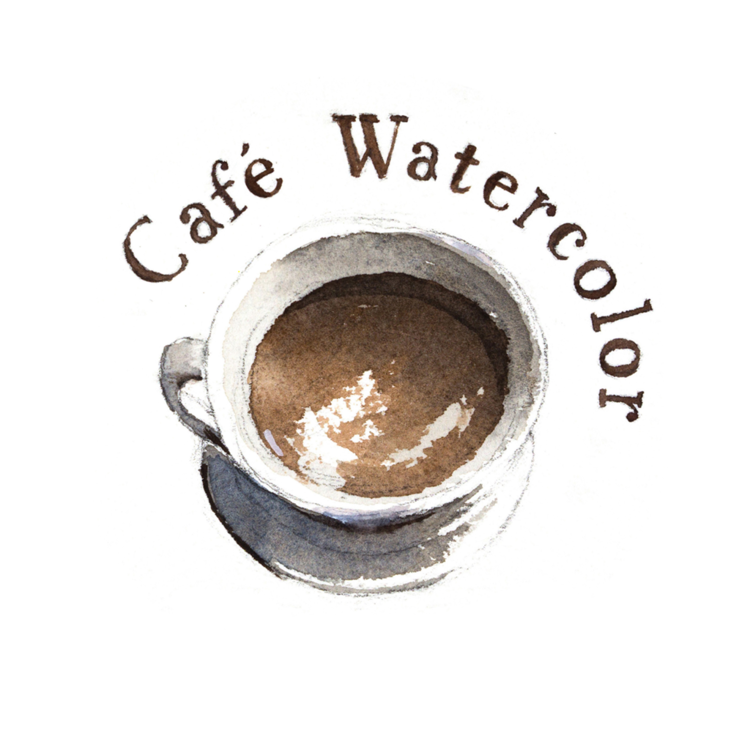My painting area
Having good materials is important for a good painting. If you are serious about painting, then you should invest into some good materials and set up things correctly. This week I'm going to talk about my painting set up. Please note that this is just my personal set up, this is what I prefer for the time being. You don't have to do exactly what I do. It's the matter of finding what works for you.
Painting area
The above photo is my painting area. It is a part of my home office. I don't have a dedicated painting studio somewhere. However, having a dedicated painting area is the most important thing for any artist (professional or hobbyist). If you have to spent 5-10 minutes setting things up for painting, you are wasting time and energy. Unless you have a specific painting area where things are ready to go, you will be less likely to paint regularly. Just the thought of setting everything up will probably exhaust you. So set apart some space for painting, this is the most important thing.
Easel
I have a drafting table and a french easel that I got back in art college. The french easel was for oil paint, but since I don't do oil anymore I find it very useful for setting up my paper. It is great because I don't need to spend extra money on furniture and such!
Another benefit of using my old french easel is that it has a supply drawer. I can store my paints and my bushes in there, and they don't take up extra space. I have my french easel tilt back about 35º angle. And I have my drafting table set flat so I can put my palette and other materials on the flat surface.
You might not have a french easel or a drafting table. But the point is to use what you already have before you order an expensive workstation.
As long as you have:
- A stable stand that allow you to paint at an angle.
- A good flat surface where you can have your materials ready on the side.
- Somewhere you can access very easily for your materials.
It's worth noting that I don't paint sitting down. Because I want to have the freedom to step back anytime I want to look at my painting in a distance. I also feel more energetic when I do that. However, don't force yourself if you can't stand for too long. Just make sure you don't sit too close to the paper. You will want to be able to see the whole painting by just tilt back a little.
Lighting
Your exist light in your room is probably not enough. I have a clamp light with arm attach to a wall shelf right above my painting table. It doesn't have to be a fancy lighting, you can get good lighting set up easily at home depot for about $50 or even less. Here are the key things to a good lighting set up:
Lighting color temperature
- Use a daylight light bulb
Unless you are always painting monotone painting. Different light will effect your color dramatically. Normal household halogen light are around 3000k or lower. Which gives a very warm tint on everything. It's easy for the eye, but not for painting. Get a light bulb that's 5000k-5500k. You will get a good neutral color light. If you use a light that's too warm. You will see everything too warm and that will greatly effects your color judgement. - Right brightness
I don't know how far you set up your light, but the brightness needs to be just right. My light is about 5 feet above my paper, and I uses 730 lumens LED light bulb. That gives plenty of brightness. Any brighter will affect my judgement on value. If your light is too bright, you will spend a lot of time trying to make your painting dark. Only to find out it is too dark under the normal lighting condition. - Light shape
This one is simple but important as well. Use a nice flood lamp so it lit your painting evenly. Don't use a spot light because it will only be bright on one area. Even if you manage to get a good lighting coverage on your paper, you might not able to get the same lighting on your palette. It doesn't make sense if your paper is lit up correctly while your painting palette is lit by warm room light. - Lighting angle
The angle of incident is = to the angle of reflection. Ok, the physics apart, what it really means is that if you angle your light wrong, you will get a lot of sheen when the paint is wet. That will be hard to work with. Tweak your lighting angle to where you tell the paint is wet without seeing all the bright sheen.
That's it for my painting set up. It might evolve into something else in the future. But this serves me great. I will be talking about my materials next week, so stay tune!



